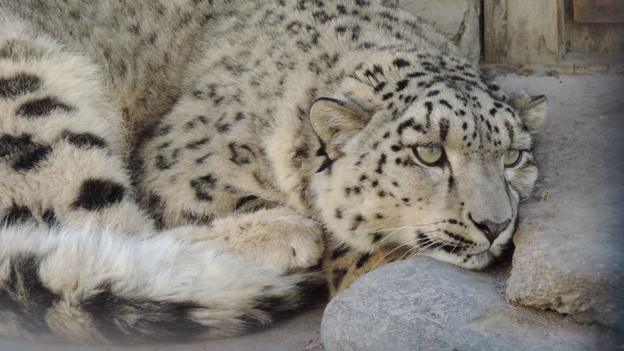The farmer's son who filmed a snow leopard
- Published
Slowed-down version of Imtiaz Ahmad's footage of the snow leopard
Villagers in mountainous northern Pakistan still remember the day a farmer's son let a snow leopard kill a dozen of his sheep, just because he wanted to catch the elusive animal on camera.
Imtiaz Ahmad waited five hours outside his family's livestock pen on a freezing March night in 2012, and was able to get about 15 seconds of video of the snow leopard entering the pen, and then leaving.
Next morning, the family found 10 sheep neatly slaughtered. One of them was half-eaten. Two were still standing, but their throats were slit. They died shortly afterwards.
The total loss - worth about $1,000 (£650) - was a financial disaster for the family and Ahmad had to face the ire of both his relatives and neighbours for not trying to prevent it.
So why did he do it?
"A videographer's first instinct is that you don't interfere with nature. You capture it as it is," Ahmad says.
Anyone else in his place would have found a way to kill the snow leopard, as often happens, he says.

Imtiaz Ahmad's work for NGOs has taken him to most of Pakistan's mountainous frontiers
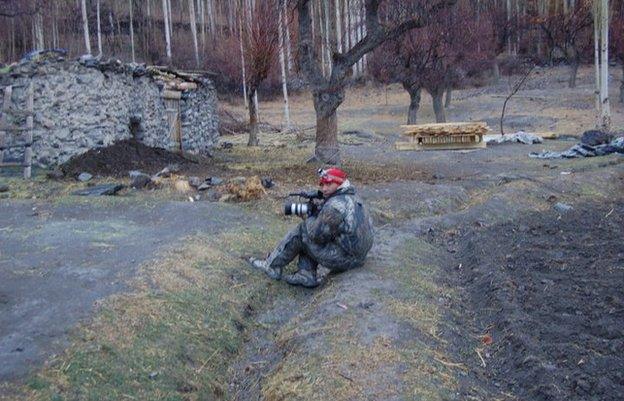
Ahmad waited five hours next to the livestock pen to get the shot
Ahmad's adolescent years in Nazimabad village in the glacial Sost region were marked by the rise of Islamist militancy in the wider Afghanistan-Pakistan region that led to a decline in tourism.
He quit school in 2004 to work as a guide for Western tourists, climbers and hunters who came for trophy hunting of wild goats allowed under government permits.
These jobs took him to base camps of such famous mountains as K-2, the Broad Peak, Rakaposhi, and most of the hunting fields across Chitral and Gilgit-Baltistan.
In 2006, realising there was no future in tourism and trophy hunting, he bought a camera and started a studio in Gilgit town where he produced short documentary films on wildlife conservation for non-governmental organisations (NGOs).
"As my video library grew, I increasingly became conscious that I did not have any footage of a snow leopard which, besides being a precious animal, is also a subject of the local ancient folklore," Ahmad says.

Snow leopards
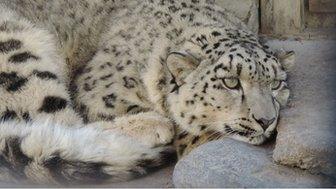
Some 4,000 to 6,000 worldwide; between 200 and 400 in Pakistan
Native to the mountains of Central and South Asia, their range stretches over more than 80,000 sq km (31,000 square miles) in Pakistan's extreme north
Mostly feed on wild animals, but livestock is also fair game
Retaliatory killings by farmers are not uncommon but are rarely reported

His desire was further fuelled by a 2006 BBC documentary that filmed a snow leopard hunting a wild goat in Chitral.
"Over the next five years, I spent most of the money I made from the studio to hunt for snow leopards; I spent months in the high-altitude pastures of wild goats, and followed up on every snow leopard sighting or its pugmarks [paw-prints] brought to my notice," he says.
"But I never got anywhere near the creature, until one day it decided to come to me."
In late February of 2012, Ahmad spotted paw-prints of a snow leopard in the snow behind his house and warned his brother to watch his sheep.
A week later, when he was in Gilgit, his brother called him to say he had seen paw-prints lower down, closer to the pen near their house.
Sensing a breakthrough, Ahmad got on his motorbike and undertook the five-hour ride from Gilgit to his village without telling his brother. He got there at about 23:00.
"As I drove up to my house, I instantly saw the snow leopard, sitting idly near a few trees behind the pen," he says.
"My heart skipped a beat, but the animal did not move. I put the bike on stand but did not switch off the engine or turn off the headlight."
Over the next four hours, Ahmad tried to get as close to the animal as he could without alarming it, hoping to get a clearer camera shot in the light from his bike.
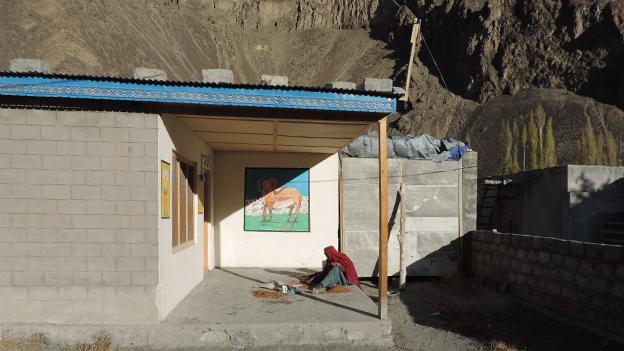
Locals in Nazimabad revere their livestock, depicted in local murals
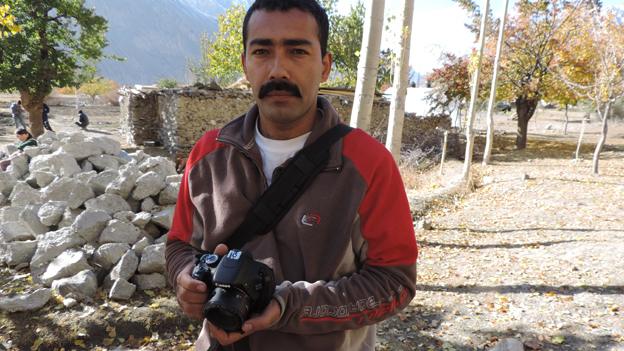
Imtiaz Ahmad filmed the episode with his basic SLR camera
At about 03:00, the snow leopard got up and walked towards the pen with measured steps. It disappeared behind the stone-and-mortar structure, and jumped in from behind.
"I heard the commotion inside," he says.
"For a while I rued I should have stopped it, then I wished I had high-definition equipment I could set up inside the pen, then I decided to wait for it to come out, hoping I might be able to get a better shot than the ones I had."
And that is what happened. An hour later, the snow leopard jumped out from over the wall directly facing the light from the bike.
Ahmad was a bit late in switching on the camera, but still managed a clear shot.
"It's not great footage, but it is probably the only one by someone who did not have an elaborate production detail or a big budget, so I'm proud of it," he says.
"And as many ancient sayings in our Brusheski language put it, a snow leopard is the angel of the mountains. Only to the lucky ones is it revealed. And if it kills your livestock, be certain that your health and wealth will multiply," he says.
"We had 12 sheep in 2012. Today we have twice that number, and also some cows and yaks."
- Published19 February 2015
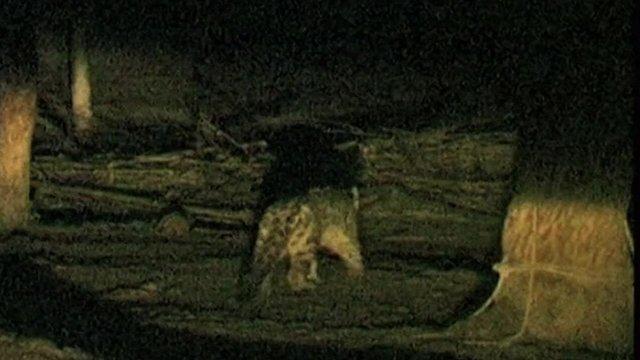
- Published8 December 2014
